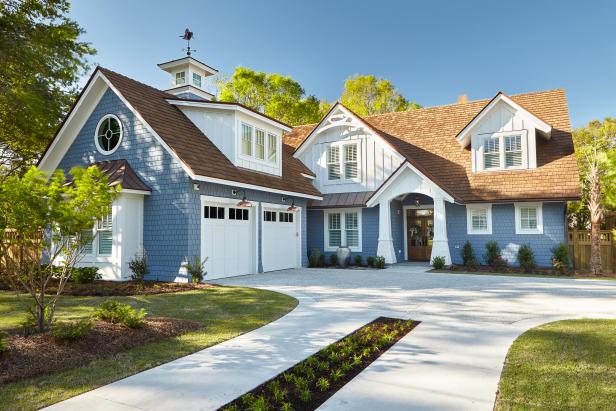
All homeowners know that owning your own home can be expensive, but takes a lot of work as well! The average homeowner can expect to spend 1-3% of the value of their home annually on home improvements. It is critical to consider and manage the costs of home improvements. The money-saving tips for home improvements contained in this article should help you afford the maintenance required for your home.
When managing your home in the summer months, make use of as many fans as you can. Ceiling fans especially help keep the air in a room circulating and therefore help keep the room cooler. Using ceiling and room fans can reduce your energy consumption by not using the air conditioner. This can lower your electric bill.
Real Wood
If you have some wiggle room in your budget, spring for real wood flooring, as opposed to laminate. Despite a similar appearance to real wood and being easy to take care of, laminate cannot be refinished. The floor will have to be replaced in the future, either by you or a different owner.
Use a wet sponge on your drywall. Instead of sanding out your drywall’s seams, take a sponge to them. It may take a bit of practice, but sponging drywall seams can be as effective as sanding them down. Sponging can be better because it doesn’t make the area as dusty while you do it.
Prior to panel installation, add stripes of paint to your walls. No matter how carefully you install paneling, it seems the old wall sometimes peeks through. To start, simply measure where the panels meet. Use paint that matches the paneling.
Construction adhesive can help eliminate a squeaking floor. While this requires you to complete the work from a basement or crawlspace, the result is well worth your trouble. What you do is use a caulking gun, then run a line down every floor joist. That way, your floor all sticks together.
Downspouts, gutters and chimneys often do not get the attention they deserve in an annual maintenance schedule. The safety of your home depends on the proper cleaning and repair of these essential items. If you fail to clean your chimney, it could catch on fire.
The best thing you can do for any home-improvement project is to engage in sufficient planning before starting any project. Leaving important decisions unmade until the day the work gets done is a recipe for disaster. You could make the wrong choices, or delay your project by not making any decisions at all. Your project will stay on time and on budget if you plan it out in advance.
“Age-in-place” home improvements should be a major priority when it comes to home improvement. This refers to the design philosophy that homeowners are going to age while they are in their home. Whether you’re thinking of renovating a home that you’ll hold onto forever or just want to sell it later, age-in-place additions are able to make living more comfortable.
Installing a shower should probably be a high-priority home improvement project for you if your home doesn’t have one. Showers are much more accessible than tubs, plus they can really reduce your water use, particularly if you have a lot of children. You can save 75% of your normal bathtub water by taking a five minute shower instead.
If you have a suburban house that is near a wooded area, think about installing a tall fence around your backyard space. This will help keep the wild animals out of your yard and your garden if you have one.
Work on painting the room before you make any other improvements. If you are planning on installing new floors, do any painting first. Regardless of whether or not you use protective coverings, it is almost impossible not to get at least a little paint on the floor.
When you first discover leaks on your ceiling, it is probably time for a new roof. Do not neglect your roof, as this can be dangerous. Look to a professional as soon as you can and get their opinion. Just make sure to hire someone with a reputation for quality and the skill set you need to get the job done right.
If you have tons of repairs to be done before you move in, you should have the heavier repairs done first. The details can always be worked on after you have made yourself comfortable in your new home.
Color Scheme
Whenever you are redesigning your room, you should make sure you select the right color scheme. Try to create complementary color schemes for the most formal rooms of your home. A color wheel displays color choices that complement one another in opposite positions on the wheel; such as red and green, or yellow and blue. The method of choosing a color scheme is an effective way to present an appealing visual challenge.
You can save money long-term if you spend money now on extra insulation. Many older homes do not have sufficient insulation. Putting additional material into attics and crawl spaces can reduce utility expenses and generate substantial savings well into the future.
By using the tips you have read here, you can complete your next home improvement project without spending a fortune. You can still enjoy your house and keep you money by doing home projects and saving money while you do it.